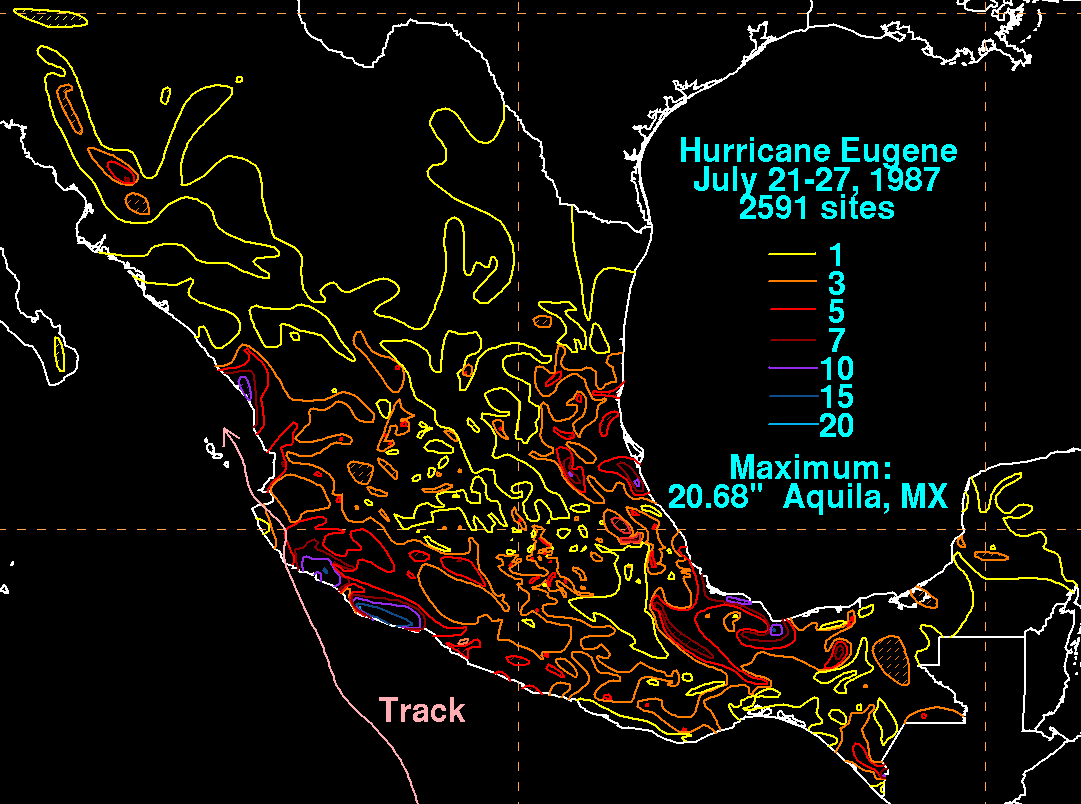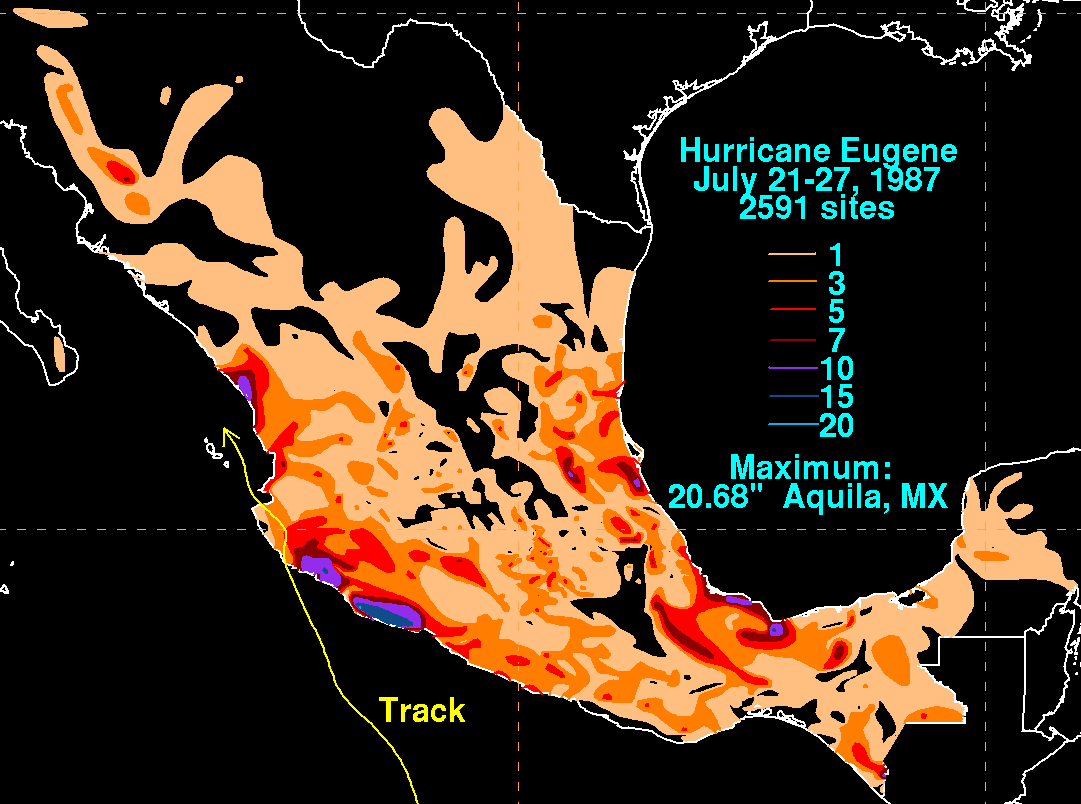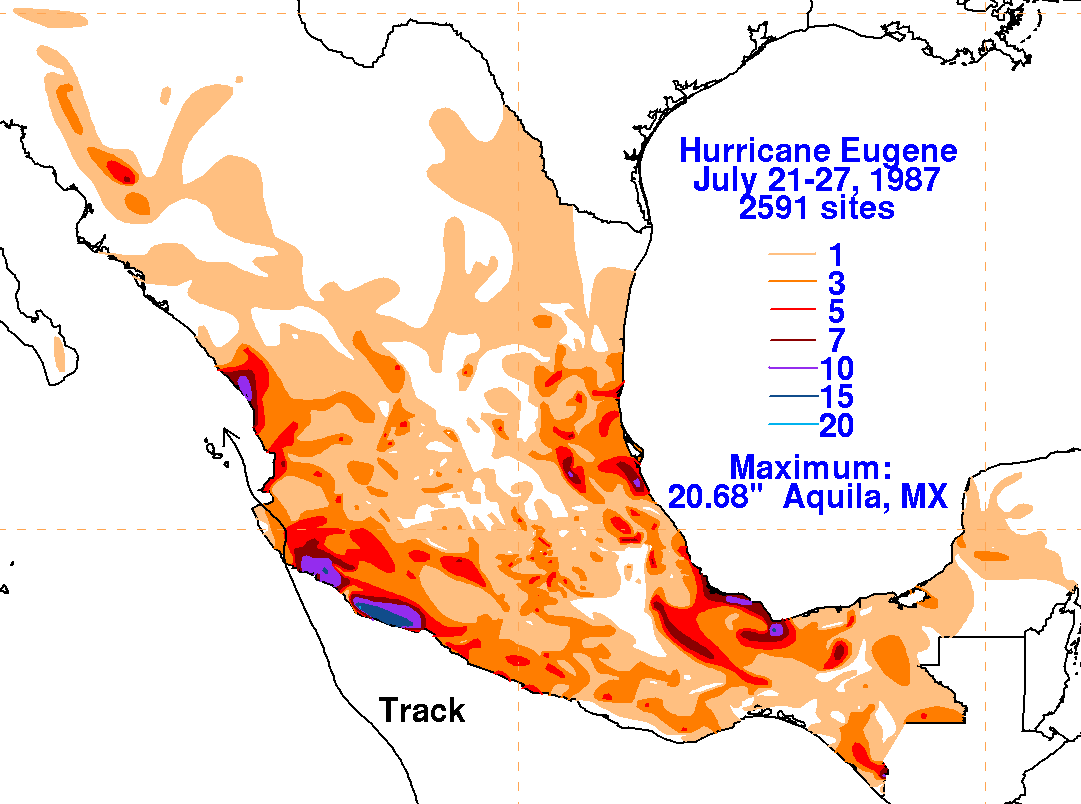A tropical disturbance was first noted in the western Caribbean Sea late on July 15th. The system moved west across
Central America between the 18th and 20th before emerging into the tropical northeast Pacific. The system resumed
development and became a tropical depression late on the 21st as it passed southwest of the Gulf of Tehuantepec.
Continuing westward, Eugene strengthened into a tropical storm on the 22nd. An upper cyclone moved around the
cyclone's northeast periphery, which began to lure the system more to the north. Eugene developed into a hurricane
on the 24th as it moved north-northwest. The cyclone made landfall south of Manzanillo on the 25th as a strong category
one hurricane. The system significantly weakened as it interacted with the topography of southwest Mexico, and was
a dissipating tropical depression when it emerged into the lower Gulf of California, completely dissipating on the afternoon
of the 26th. The graphics below show the storm total rainfall for Eugene, which used rainfall information from the Comision
Nacional del Agua, which contains Mexico's National Weather Service. A pair of maxima in western Mexico occurred to
within a couple hundred miles east of its track. The maximum in eastern Mexico occurred when rain from its outermost
inflow bands was enhanced by an upper cyclone moving through its northeast quadrant.
 |
 |
 |